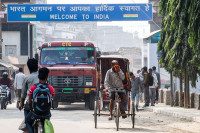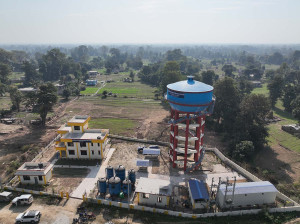Money
New civil aviation policy proposes 90 percent FDI in international airlines
The draft proposes modest reforms, increased foreign investment caps, and greater emphasis on regional connectivity.
Post Report
The Ministry of Culture, Tourism and Civil Aviation has proposed allowing up to 90 percent foreign direct investment (FDI) in international airlines seeking to operate in Nepal, according to a preliminary draft of the new Civil Aviation Policy released on Tuesday.
The draft, published on the ministry’s website for public consultation, also recommends maintaining domestic airlines' current 49 percent FDI ceiling. However, it proposes allowing up to 95 percent foreign investment in aircraft manufacturing and design companies and 80 percent in other aviation service providers.
Once enacted, the new policy will replace the existing Civil Aviation Policy that has been in place since 2006.
A tourism ministry official said the proposed provisions are open to change, pending feedback from stakeholders. “This is not final. It may change depending on stakeholder feedback to ensure the policy supports a viable aviation sector,” the official said.
The draft underscores the need to update and enforce legal frameworks concerning passenger liability and insurance in the domestic sector. A new national law is on the cards to safeguard air passenger rights and ensure appropriate services and compensation.
It also seeks to address growing human resource demands in the aviation sector by promoting internship opportunities and strengthening Nepal’s ties with the International Civil Aviation Organisation (ICAO)’s Next Generation Aviation Professionals (NGAP) initiative.
The policy outlines coordination mechanisms among federal, provincial, and local governments to promote domestic connectivity. It proposes targeted support for inter-provincial flights and incentives for services to geographically disadvantaged areas, including tax exemptions and operational subsidies.
Construction of new airports will be permitted through joint investment by the three tiers of government, provided operational feasibility has been ensured. New domestic airlines will be licensed only if they operate from hubs outside Kathmandu, with temporary operational facilitation provided to help them get established.
The draft prominently features accessibility and inclusion, with calls to improve airport infrastructure and incorporate modern technology to better serve people with disabilities.
Private individuals and institutions will be allowed to operate aircraft for personal and non-commercial use under permits that include stringent flight and safety requirements.
The policy draft also proposes stricter aircraft import standards.
Pressurised aircraft older than 15 years, or those that have exceeded 50 percent of their design life or undergone 35,000 pressurisation cycles, will no longer be eligible for import.
This marks a tightening from current rules, which set the limits at 15 years, 75 percent of design life, or 45,000 cycles. Restrictions on non-pressurised aircraft over 20 years old remain unchanged.
The draft takes a phased approach to implementing an Open Skies Policy, encouraging the reciprocal expansion of bilateral and multilateral air service agreements to enhance international air connectivity.
A significant regulatory shift is proposed: future bilateral agreements will adopt the “Principal Place of Business and Effective Regulatory Control” practice, replacing the long-standing requirement of “Substantial Ownership and Effective Control”. To support cooperative marketing arrangements such as Third-Party Code Sharing, existing agreements will be reviewed accordingly.
The policy also proposes liberalised international operations from regional hubs, allowing international carriers to operate flights with Fifth Freedom Traffic Rights from the Gautam Buddha International Airport and the Pokhara International Airport.
The draft policy acknowledges multiple structural challenges, including a potential shortage of financial resources and limited access to necessary infrastructure for the sector’s growth and expansion. Being a highly technology-intensive industry sensitive to global developments, Nepal’s aviation sector remains vulnerable to international shifts.
Low levels of public and private investment could further hinder implementation, while the affordability and accessibility of other transport modes could constrain the demand for air travel.
“To ensure the sustainable development of the civil aviation sector, it will be necessary to create an enabling environment that encourages investment from the government, private sector, and foreign investors,” the draft concludes.




 11.12°C Kathmandu
11.12°C Kathmandu












